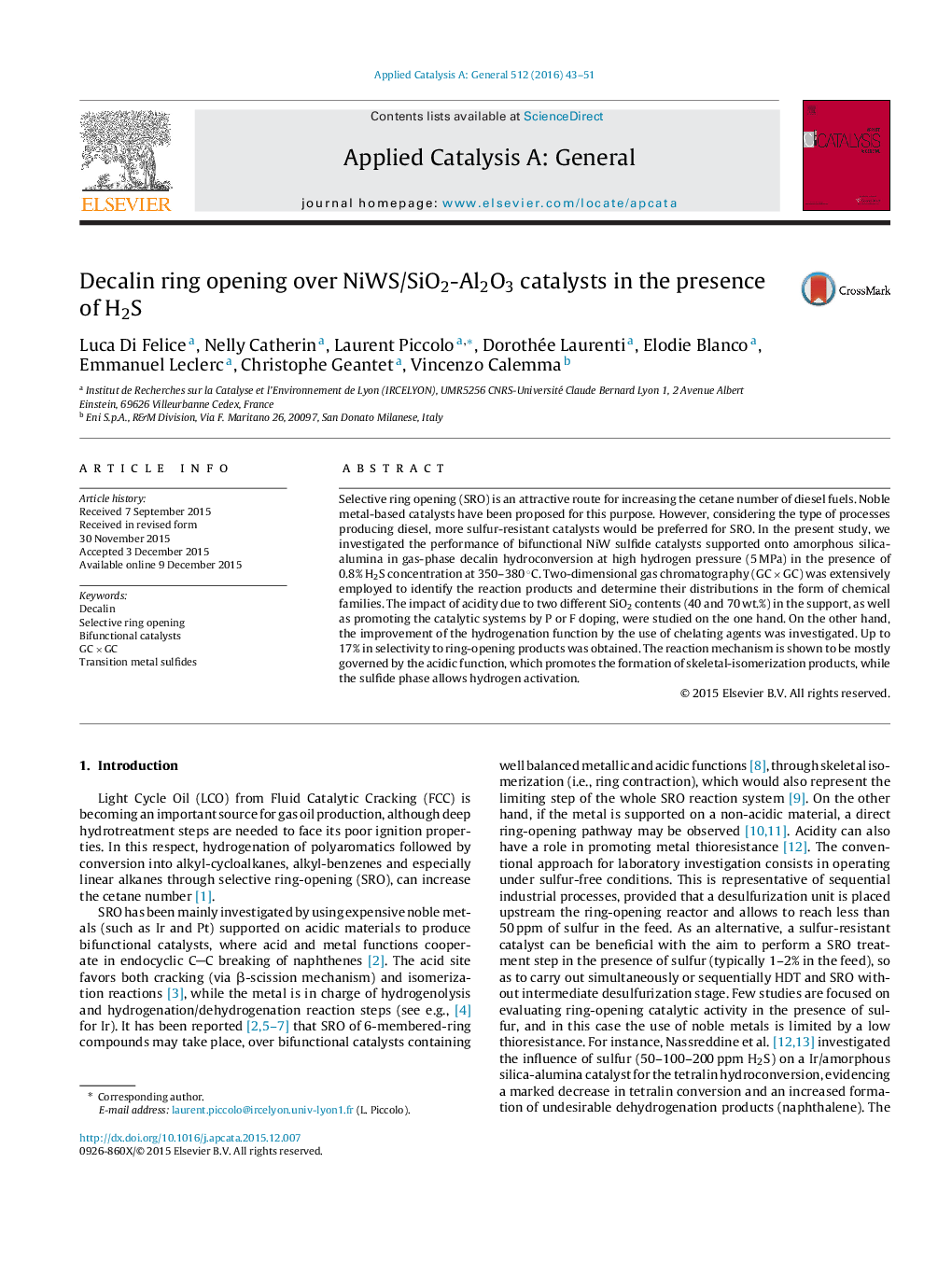| کد مقاله | کد نشریه | سال انتشار | مقاله انگلیسی | نسخه تمام متن |
|---|---|---|---|---|
| 38884 | 45795 | 2016 | 9 صفحه PDF | دانلود رایگان |

• The hydroconversion of decalin in the presence of 0.8% H2S over bifunctional NiWS/SiO2-Al2O3 was investigated in the context of selective ring opening for LCO fuel upgrading.
• The influence of inorganic additives (F,P) and organic booster (citric acid) was assessed. Fluorine leads to a significant increase in decalin conversion.
• A maximum of 17% selectivity to ring-opening products is obtained, with moderate cracking to lighter products, while skeletal isomerization is the main hydroconversion route.
• The ring-opening mechanism is dominated by the acidic function through the so-called paring reaction, whereas metal-type hydrogenolysis is negligible.
Selective ring opening (SRO) is an attractive route for increasing the cetane number of diesel fuels. Noble metal-based catalysts have been proposed for this purpose. However, considering the type of processes producing diesel, more sulfur-resistant catalysts would be preferred for SRO. In the present study, we investigated the performance of bifunctional NiW sulfide catalysts supported onto amorphous silica-alumina in gas-phase decalin hydroconversion at high hydrogen pressure (5 MPa) in the presence of 0.8% H2S concentration at 350–380 °C. Two-dimensional gas chromatography (GC × GC) was extensively employed to identify the reaction products and determine their distributions in the form of chemical families. The impact of acidity due to two different SiO2 contents (40 and 70 wt.%) in the support, as well as promoting the catalytic systems by P or F doping, were studied on the one hand. On the other hand, the improvement of the hydrogenation function by the use of chelating agents was investigated. Up to 17% in selectivity to ring-opening products was obtained. The reaction mechanism is shown to be mostly governed by the acidic function, which promotes the formation of skeletal-isomerization products, while the sulfide phase allows hydrogen activation.
Figure optionsDownload high-quality image (193 K)Download as PowerPoint slide
Journal: Applied Catalysis A: General - Volume 512, 25 February 2016, Pages 43–51